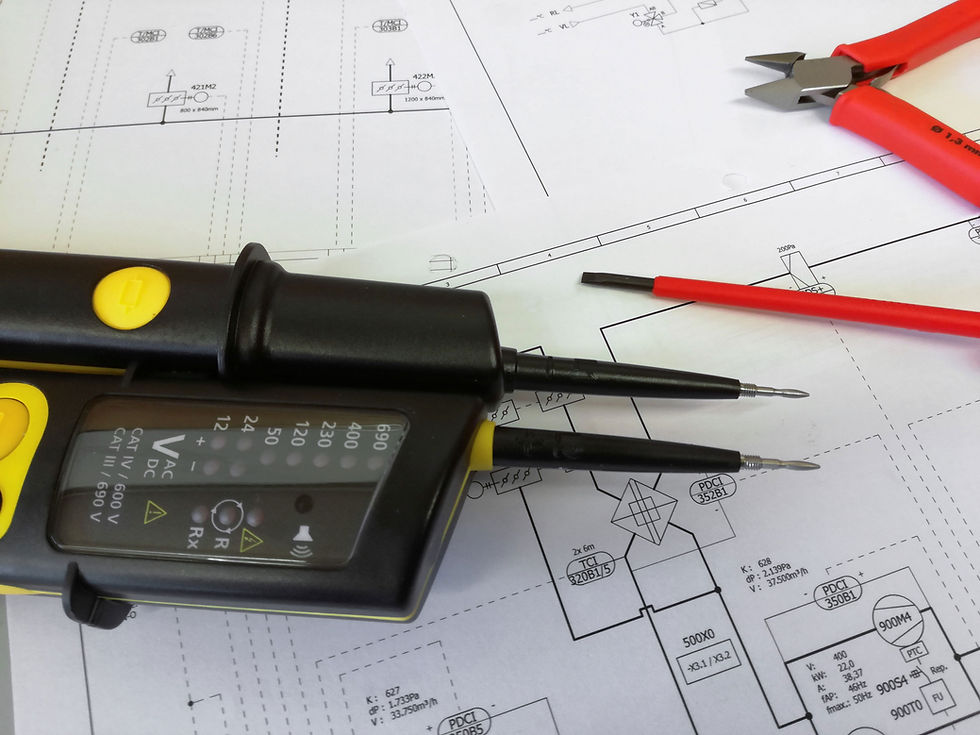Single Phase vs. 3 Phase Connections for Optimal Performance, Including Electric Car Charging
- Calem Buckby
- Jan 14, 2024
- 2 min read
In the realm of residential design, every detail contributes to the overall success of your dream home. Among the pivotal decisions that could significantly impact your home's efficiency and functionality is choosing between a single-phase and a three-phase power connection. At Oceanbreak Building Design, we recognize the gravity of this choice, and in this updated blog post, we aim to provide you with a deeper understanding of the distinctions between single-phase and three-phase power connections, empowering you to make an informed decision for your residential sanctuary, now considering the rise of electric vehicles.

The Basics:
Before we delve into the intricacies, let's establish a solid foundation by understanding the basics of single-phase and three-phase power systems.
Single Phase:
The most common residential connection.
Comprises two wires: one hot wire and one neutral wire.
Powers electrical appliances and lights through the voltage difference between the hot and neutral wires.
Three Phase:
Involves three hot wires and one neutral wire.
Each hot wire carries an alternating current at the same frequency but with a phase difference.
Traditionally used in industrial settings, it's gaining popularity in larger residential properties.
Efficiency and Power Distribution:
A significant advantage of a three-phase power connection lies in its superior power distribution capabilities. While a single-phase system provides a constant flow of power, three-phase power offers a more balanced and efficient electricity distribution. This results in reduced power loss during transmission, making it ideal for larger homes with increased electricity demands and ensuring the effective operation of high-power appliances, including electric car chargers.

The choice between single-phase and three-phase power also depends on the appliances you plan to use. Single-phase power suits most household appliances, lighting, and small motors. However, for energy-intensive devices like air conditioners, electric ovens, or pool pumps in your dream home, a three-phase connection ensures seamless operation without straining the electrical system. Importantly, with the growing popularity of electric vehicles, a three-phase connection becomes increasingly advantageous for faster and more efficient charging.
Cost Considerations:
While three-phase power provides enhanced efficiency and capacity, it's crucial to consider associated costs. Installing a three-phase power connection typically involves more extensive electrical infrastructure, potentially leading to higher installation expenses. On the other hand, single-phase connections are generally more straightforward and cost-effective. For an accurate evaluation of your dream home's specific requirements and the most cost-effective solution, consult our experienced team at Oceanbreak Building Design.
As you embark on the exhilarating journey of building your dream home with Oceanbreak Building Design, the decision between a single-phase and three-phase power connection is pivotal. Consider factors such as the property size, the types of appliances you plan to use, and your budget constraints, including your electric vehicle charging needs. Our dedicated team is here to guide you through every step, ensuring that your dream home not only meets but exceeds your expectations in terms of comfort, efficiency, and functionality. Let Oceanbreak Building Design be your partner in turning your dream home into a seamlessly powered haven, accommodating the latest in electric vehicle technology.
